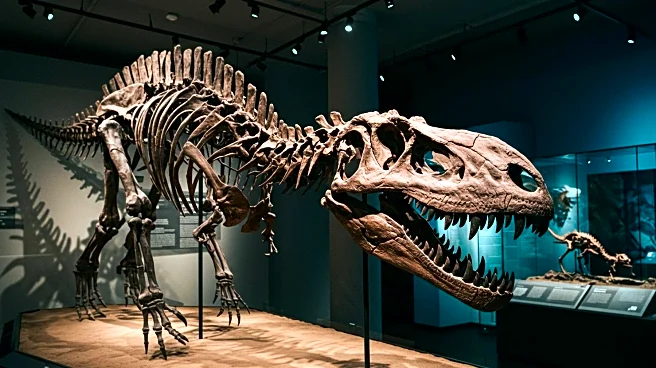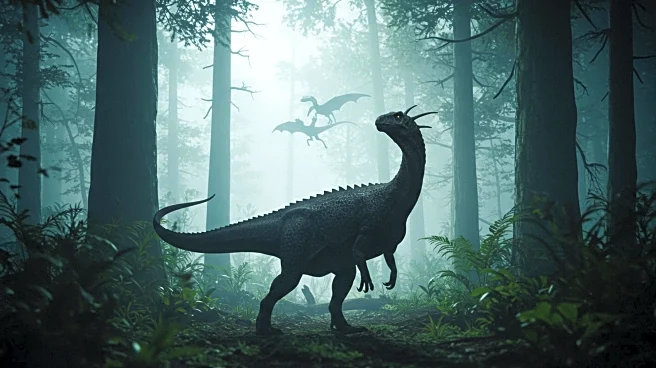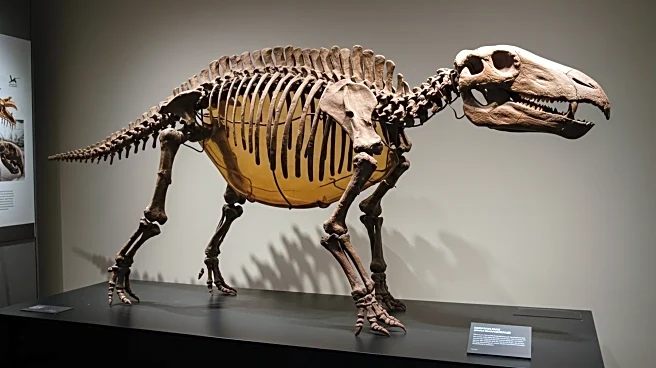Rapid Read • 7 min read
Scientists have identified a new dinosaur species, Khankhuuluu mongoliensis, which provides insight into the evolution of tyrannosaurs. This species, discovered in Mongolia, is believed to be a direct ancestor of Tyrannosaurus rex. The findings suggest that tyrannosaurs originated in Asia and migrated to North America, evolving into massive predators. The study, published in Nature, highlights three major migrations between Asia and North America that contributed to the diversification and size increase of tyrannosaurs during the late Cretaceous Period.
AD
The discovery of Khankhuuluu mongoliensis is significant as it reshapes the understanding of tyrannosaur evolution, emphasizing the role of Asia in their development. This finding supports previous research on the migration patterns of tyrannosaurs and their evolutionary success. It provides crucial data on the transition from smaller to larger apex predators, offering a clearer picture of the tyrannosaur family tree. The study underscores the importance of revisiting historical fossil collections to uncover new insights into prehistoric life.
Further research may focus on exploring the fossil record in Asia to fill gaps in the understanding of tyrannosaur evolution. Scientists may also investigate other potential migration events and their impact on the diversification of dinosaur species. The study encourages paleontologists to reexamine existing fossils for new discoveries that could further illuminate the evolutionary history of tyrannosaurs.
The discovery highlights the importance of international collaboration in paleontology, as researchers from different countries contribute to a more comprehensive understanding of dinosaur evolution. It also raises questions about the ecological factors that drove the migrations and adaptations of tyrannosaurs, offering potential insights into the dynamics of prehistoric ecosystems.
AD
More Stories You Might Enjoy











